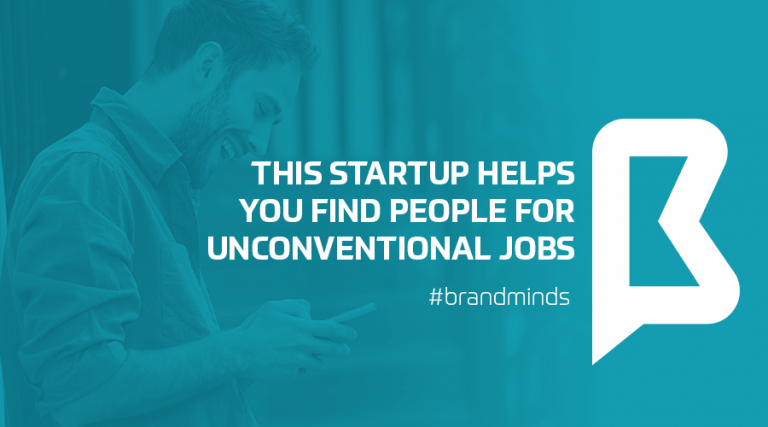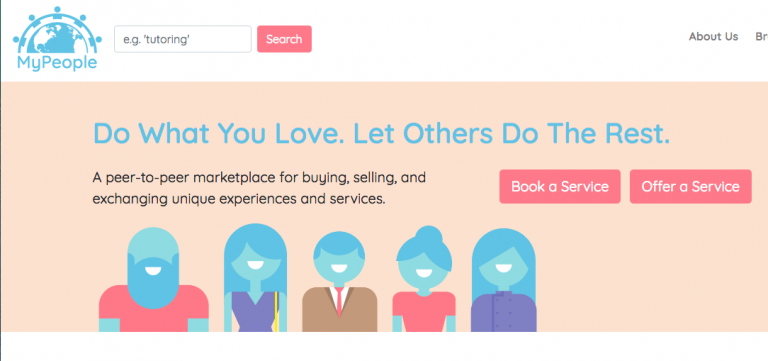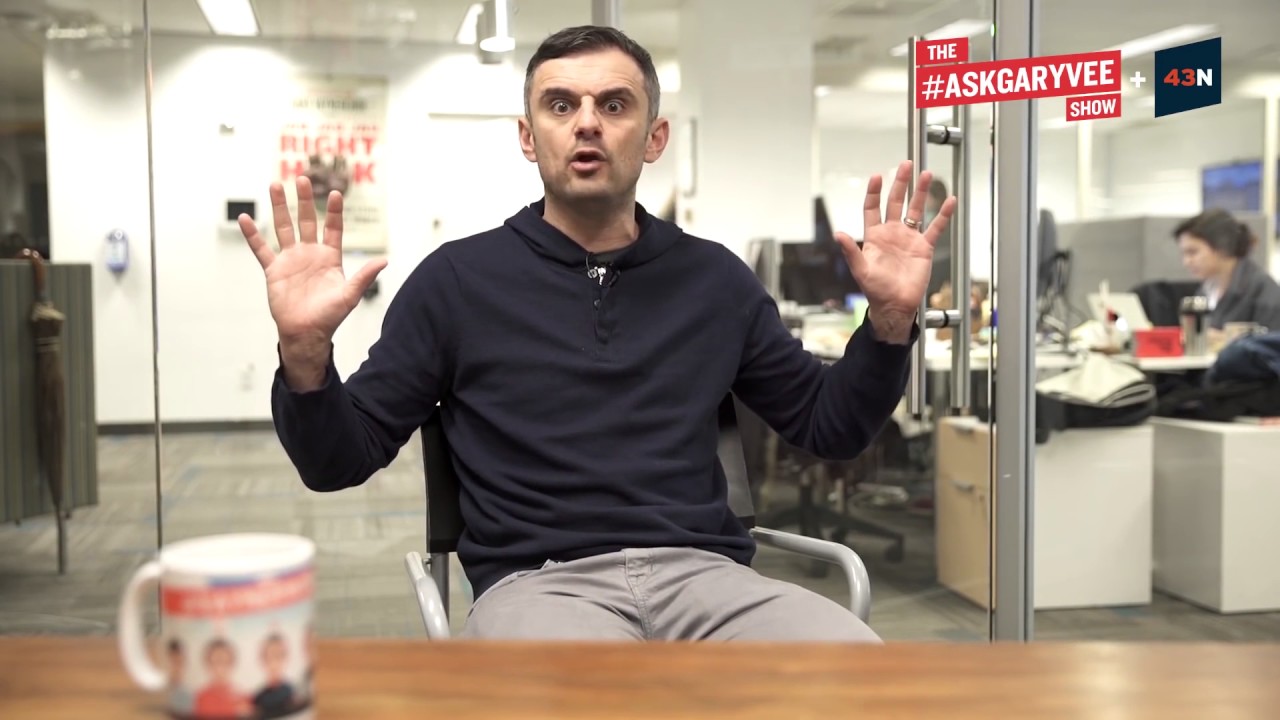How to evaluate a startup company for investment – 5 tips
If you are an investor looking for a startup company to invest in, this article is for you.
It is no secret that investors have a hard time finding good investments. With large sums at stake and a constantly shifting market, investors that do not try their best to avoid miscalculations will experience a loss of capital. Beyond the initial difficulty of finding a credible source of startups to invest in and how to go about it, the biggest question investors ask themselves is “how do I know this investment is right?”.
Indeed, how does anyone know if their decision is the right one or not? There are certain indicators that allow seasoned investors to avoid making such costly errors. While some investors simply follow their gut, the majority are certainly much keener to do (extensive) research before making any decision.
Blindly trusting what is presented to you when it comes to investments is, to say the least, unwise, especially when considering that up to 90% of startups fail, and of those that do succeed, many take a long time to see profit. For most investors, this small and far-off goal does not produce significant enough ROI to mitigate the risks involved in the first place.
As such, investors need to be completely sure before they make the investment.
The question of how to evaluate these startups
Fortunately for you, there are several ways in which this can be done. Don’t be afraid to ask your prospective the tough questions, remember, it is your money on the line. Startups require capital, and as competition for investors is cut-throat, they are willing to provide all the information an investor may need.
Following these 5 tips could be the difference between making money and losing what you thought was a sure-shot investment.
1. The Founding Team
The world’s best investment companies are the ones that are extremely selective in the startups they invest in. Those chosen startups have only attained such investment through the perseverance of a strong team. A strong founding team is the first thing an investor should look at when considering a startup.

The leadership of a startup forms the culture, discipline and work ethic of that venture. While a new or innovative concept will be necessary to win over customers, it cannot be denied that the hard work of the founding team directly correlates with the success of the firm. The way the idea or business model grows and develops depends on the core team that starts it all.
As an investor, you have to look for the passion of the team as much as the integrity of the project. Teamwork is also an important factor determining how well the startup functions. Beyond this, how experienced are the founders? Are they new to business in general, or have they already owned or operated successful businesses? This is a qualitative measure of how likely a startup is going to be successful before they have even launched.
2. The overall returns on the investment

During pitch presentations, make sure you ask the startups for accurate projections of annual revenues and profits, implying the kind of return on investment (ROI) you can expect. Many startups are unrealistic about their expected returns because they are trying to please potential investors.
Instead, make sure to do your research and request the company’s previous balance statements. You’ll be able to catch all the overpromises they have made due to inexperience easily.
Investors, however, should not let a lower ROI be the reason they reject a startup, as this must be judged on a case by case basis. A pragmatic approach means that the ROI you are presented with will be closer to the one you receive. As an investor, you also accept that even for a successful startup, ROI starts out small and grows gradually over time. If spent correctly, the investment will allow the startup to expand, leading to greater returns in the long run.
3. The competitive advantage of the investment
Investors often worry about the idea that a startup has immense competition in the market. They often forget that this means the startup has potential as they have tapped a potential market segment. On the other end, other investors also tend to look out for promising startups so they could get their hands on them first.

Competition to invest in a startup only raises its credibility as a desirable investment opportunity. Since startups sign a contract for a set number of years, the investors would benefit from them until the contract is renewed or turns void.
A venture should not be avoided just because a high degree of competition restricts its entry into the market. Instead, investors should have a more flexible approach, and potentially allow new ventures the chance to carve their own paths. Several companies have risen to prominence by virtue of the fact that their investors had faith in the company’s capability.
4. Market momentum and demand
The product’s position in the market is a strong indicator for investors. Companies have to build a certain momentum within the market in order to attract investors. This momentum can be crucial because it helps drive the company to the next level.
The job of an investor is to determine whether the next level is achievable with their help. If achieved, the company will not only evolve and produce substantial ROI for the investor but establish itself in the market. If however, the company fails to do this, the investor might lose out because of a bad deal.
Check the overall growth of the company and how it has built itself to the point that its founders are pitching to you.
Check through past financial reports and even ask for profit and loss statements to see overall growth.
The kind of momentum built in the market is itself a key performance indicator of how well the company is to perform in the years to come.

5. Business mission and values
The mission is the one thing that the investor cannot change. For an investor, it is the mission of the company that can make the final decision. Some investors can be so impressed by a venture’s mission that they may go with the investment blindly, yet these are rare exceptions and is in general not recommended.

The mission the venture puts forward will also inform the culture of the startup. The investor, therefore, has to determine whether the mission aligns with their beliefs. Startups usually describe their mission in their pitch, though if they fail to do so, ask. Failing to mention the business mission is one of the most common mistakes made by rookie startup CEOs, and it is important when making your decision.
The way they speak about it speaks to the emotional value the company’s owners stake in their business. An entrepreneur who is highly emotionally attached to the mission is likely to devote more of their time and energy to the project, and this should be considered when determining whether the startup is worth taking the risk for.
Be aware, however, that a passionate entrepreneur can also be a stubborn one. Make sure the culture of the startup is in line with your own belief system. Having clashes after the deal is done can prove to be harmful to both parties.
[bctt tweet=”Taylor Ryan (CEO@Klint Marketing) writes about 5 tips on how to evaluate a startup company for investment” username=”brand_minds”]
Why invest in a startup?
Startups are full of energy and potential that can greatly benefit from a little injection of money. Investors often look for promising startups in schools, competitions and online because they recognize the kind of potential they have to drive change in the market. They are capable of disruptive innovation, thereby changing the overall landscape of the market, as Apple once did.
Investors are always on the lookout for promising entrepreneurs with their own companies who display the kind of leadership qualities that can create success. Startups are also a great way of investing in something with the potential for huge returns.
Key Takeaways
- Is the founding team strong?;
- Look for the passion of the team as much as the integrity of the project;
- Request the company’s previous balance statements;
- Judge a lower ROI on a case by case basis;
- A startup with competition in the market means they have tapped a potential market segment;
- Determine whether the startup’s next level is achievable with your help;
- Check the overall growth of the company;
- The kind of momentum built in the market is itself a key performance indicator;
- What is their mission?
- The mission will also inform the culture of the startup;
- Does the founding team have an emotional stake in their business?
Conclusion
Evaluation of a startup is a necessity, as you can never be sure what the startup will bring to their pitch. The business can thrive with the investors help or equally drown in debt in a few years. No matter what happens, an investment is never 100% guaranteed. An investor is always gambling on whether or not an investment will work out.
Investing in startups might not see an immediate ROI, but can be extremely profitable in the long-run. Some of the greatest investors of all time started by investing in small startups that at that time were only worth a couple of hundred dollars. Now, companies like Apple, KFC and even Google are worth a million times more than their initial evaluations.
In time, the kind of qualities that you evaluate the company on will reap the fruits you deserve. The rest requires patience and hope that whatever happens, happens for the better.
Join the Conversation
We’d love to hear what you have to say.
Get in touch with us on Facebook Group and Twitter.
This Start-up Sets Out To Feed The Planet

If you’ve seen Interstellar, the Oscar-winning movie, you were certainly fascinated by its story about a father travelling through time and space to save his daughter’s life and everyone else’s on the planet.
A second story runs in the background of Interstellar – a grim story: in the 2070s the world is dying of starvation.
To prevent this scenario from happening fifty years in the future, we need to act today.
This is what Hexafly is doing – finding innovative and sustainable ways to feed the planet.

Hexafly is a biotech start-up founded in 2016, in Ireland which offers a new raw material source to the Aqua feed, Chitin and Plant Nutrition industries.
This start-up was founded by Alvan Hunt (CEO), John Lynam (CTO) and Patrick McGarvey (COO).
They are all passionate about finding new and sustainable ways to feed the world by combining their knowledge of chemistry, entomology and biotechnology.
Up to date, Hexafly attracted a total funding amount of $2.7M.
Hexafly’s Vision
At Hexafly our aim is to bring an insect farming revolution to the world and find smart ways to feed the planet…
Alvan Hunt, CEO and Co-founder
The Problem
Hexafly says the industry is currently struggling with decreasing food supplies.
In the next few years, the exponential increase in demand for fish food will far exceed its supply.
The industry cannot meet these demands because of declining wild fish stocks, stricter fishing quotas, 300% increase in material costs.
The solution envisioned by Hexafly
To tackle the problem of diminishing food supplies, Hexafly proposes the sustainable farming of insects.
Through research and innovations, Hexafly developed the following products:
- Insect Oil
Insect Oil is a high-quality nutritional oil, of high-value to the Aquaculture and Animal feed market.
- Protein
Pure Protein intended as a fish feed additive for the Animal and Aquaculture Industry.
- Frass
A unique plant nutrition compound which provides an auto-immune boost to plants. It is a 100% natural fertiliser for the Plant Nutrition Industry.
- Chitin
A high-value bio-polymer with many uses in medicine, cosmetics and as a food additive for the Chitin Market.
Hexafly’s Mission
Hexafly’s mission has three directions:
1.Solve the aquaculture feed crisis
The shortfall in supply and demand is causing a substantial opening in the market for high-quality alternatives that are economically sustainable and of a higher nutritional value.
2. Develop novel chitin extraction methods
The start-up is developing novel chitin extraction technologies that are based on improving the efficiency of the standard chitin industry extraction methods.
3. Bring an insect farming revolution to the world
Hexafly is committed to bringing sustainable natural commodities to the aquaculture, chitin and plant nutrition industries. In doing so they are enabling green and clean growth for years.
Awards
The innovative biotech start-up won Gold at the 2018 National Start-up Awards and the Innovation Award at the 2017 National Enterprise Awards.
Join the Conversation
We’d love to hear what you have to say.
Get in touch with us on Facebook Group and Twitter.
This Startup Helps you Find People for Unconventional Jobs
Do you need a plumber? Or a dog-walker for your chihuahua? How about someone to setup your wifi?
There are many websites where you can find people ready to run errands or do your chores or other microjobs.

But what if you need someone to house sit your plants, come over and prepare an authentic German meal, teach you how to make pine needle baskets or create personalized clothing patterns?
You can find people with these very specific skills on MyPeopleNow.

MyPeopleNow is a startup which offers a peer-to-peer marketplace for buying, selling and exchanging unique services and experiences.
Melissa Strawn, CEO and co-founder of MyPeopleNow says the platform’s goal is to “build a marketplace for people who don’t fit into the traditional employment model so that they can monetize their unique skills and experiences in order to earn a living.” (via geekwire.com)
Here are a few examples of services listed on the platform:
- Custom Pokemon drawings;
- Companionship for your elderly loved one;
- Minecraft banner using client’s Minecraft skin;
- Repotting your plants;
- Pinterest virtual assistant;
- Learn to grow vegan leather;
- Reptile conversations – someone you can discuss reptile-focused subjects;
- Finding resources – a service offered by Melissa herself who sets out to help people find the resources they need when they are in a tough spot.
Here are a few interesting facts, figures and information about MyPeopleNow:
- The cost of the services listed on the platform range from $5 to $500;
- The site’s users can trade services through the use of points;
- The company takes a 20% cut of the transactions, but also awards points worth 10% of the price of a service to the provider, and 10% to the buyer;
- The site has 250 people offering more than 300 different services, and more than 400 users;
- The platform’s success is due to focussing on long-tail services;
- Melissa started thinking about this platform when she was a low-income single mother trying to finish college and struggling to get everything done by the end of the day;
- Melissa and her husband bootstrapped to get funding for their startup;
- The biggest mistake they made was waiting too long to start.
5 main reasons why 90% of startups fail
Shopify, Dropbox, Uber, AirBnb, LinkedIn, Instagram.
They are all well-known companies and we bet you are a frequent user of at least two of them.
They have millions of users worldwide and generate billion dollars in revenues and they all began their business journey as startups.
But while these startups succeeded, other 90% failed.
CB Insights identified 20 reasons for startup failure, but we wish to draw your attention to the top 5.
Here is Top 5 main reasons startups fail and what to do about it:
Reason #1
Failed to fill market gap or solve a problem

A startup is a business structure created to solve a problem or fill a market gap by delivering a new product or service. As you can see, solving a problem is at the heart of any startup and the very reason for its existence.
Still there are numerous startups which create a solution that doesn’t have a problem.
So before launching your startup, ask yourself:
Does anybody want to buy my product/service?
Validating the demand for your product or service is the most important activity you must undertake to make sure your startup is not a bust.
Without market validation you will have a product that no one will pay for.
Here is the framework that Mitchell Harper used to validate the idea behind BigCommerce.com which he co-founded in 2009:
- write down the problem, not your solution
- determine if it’s a tier 1 problem or not
- find your prospects, reach out to them and ask them questions about their problem
- properly determine specific solutions
- look for pain in existing solutions
- verify there’s a budget for your solution
- use your prospects to define your roadmap
Be a pain-killer, not a vitamin!
Mahendra Vora, founder of Intelliseek
Reason #2
Ran out of cash

You may have the greatest idea for a product that will solve your customer’s problem, but you need money to make it a reality.
To prevent your startup from running out of cash, you need to know what is your startup’s runway.
What is a startup runway?
A startup runway is the amount of time (expressed in months) until you run out of cash to operate.
Mitchell Harper recommends a 6-month runway which means cash in the bank that pays all your startup’s operating costs for 6 months.
How NOT to run out of money?
Gary Vaynerchuk says: have a strategy on what to do with the money your startup has and don’t waste it on fancy stuff like designer furniture, expensive coffee machine or deluxe office space.
Here are a few tips on how to extend your startup’s runway and not run out of cash:
- cut all non-essential expenses
- don’t spend money on fancy products or pampering for your employees
- do your own PR and marketing: take the personal approach and find authentic and innovative ways to spread the word about your startup
- hire part-timers and freelancers
- find companies that give free credits for startups
- find ways to bring in money: you don’t have to be profitable right away, but you need to bring in enough cash to extend your runway
- track your startup’s runway!
Reason #3
Failed to put together the right team members

You are the founder of your startup and the brilliant mind behind your startup’s product or service. You may think that being jack of all trades is the best for your startup, but you should know it is only a short term solution. One man can do so much.
The truth is you need a team.
It is imperative that you are selective and strategic about your team.
Neil Patel
Here are Neil Patel’s recommendations on how to put together the best team for your startup:
- start with the man in the mirror:
What are your strong points and your weak points?
What are your abilities?
Where lies your expertise?
What do you lack?
If you feel you cannot be objective, hire a professional to evaluate your skills.
- hire people who fit these 2 sets of criteria: hard skills and resourcefulness
- build your team for the long term company, not just the startup phase
- make sure the people you hire, irrespective of their skills set, always place your customer front and centre
- know your team member’s ambitions: if your employees’ jobs help them fulfil their ambitions, then it may be a way to determine that they’re in for the long term
Reason #4
Get outcompeted

Imagine the following scenario:
You worked hard on getting your startup off the ground and your product into the world only to discover that other company has beaten you to it and launched a similar product earlier. You have just been outcompeted!
This is the stuff of nightmares for any startup founder!
To keep this scenario off your startup, you need to do the following:
- understand your market and the problems your target customers are having right now
- develop products that your market needs at this time, don’t develop products that your market needed 3 years earlier
- keep updated with your market’s needs
- bear in mind that markets are changing very quickly these days
- know your competitors like the back of your hand
Here are 3 tools you can use to conduct a competitor analysis:
1.SEMrush
Use SEMRush to pull your competitor’s back-links and monitor which keywords they rank for.
2. MozBar
MozBar is a browser extension from Moz which provides a surface-level view of how authoritative a site is in the eyes of Google.
3. BuzzSumo
BuzzSumo allows you to look at the top-performing content for relevant topics for your brand and specific competitors.
Gretta van Riel is a 5x startup founder.
Following the launch of her first startup, Gretta grappled with increased market competition. Instead of giving up, Gretta discovered a different perspective on this matter. Read her story here:
How increasing market competition saved my startup.
Reason #5
Failed to find a balance between cost and pricing

Finding the balance between costs and prices can be daunting.
Britt Crawford, experienced adviser to numerous startups found that many of them were making these pricing mistakes:
- pricing too low
- not knowing the customer acquisition costs
- neglecting direct sales
- keeping prices high as new low-cost entrants are coming into the market (the cash-cow disease)
- getting into price wars
When establishing your pricing strategy, Britt Crawford recommends that you stick to the following rules:
Know your product
Know your market
Know your customer
Conclusion
All of the above failures can be prevented.
As a startup founder you may have the perfect product, the perfect team and all the money you need.
Your startup’s success relies entirely on your perseverance.
At the end of the day there is only one thing that kills a company.
And that’s when the founder gives up.
Adeo Ressi, CEO of The Founder Institute
10 actionable growth hacks for startups
Do you want to learn how other start-up companies employed growth hacking strategies to bring their businesses to the next level?
Read our 10 actionable growth hacks list and get inspired!
#growthhack1: use exit-intent popups to build a mailing list
Exit-intent popups are pop-ups that will identify when a user is trying to leave from your page and automatically display a last-minute offer or other forms of incentives.
The purpose of exit-intent pop-ups is to capitalize on your visitor’s interest for your product or service and influence him to freely submit his email info.
Exit-intent pop-ups are a great tool for lead generation and can increase conversions.
Key takeaway: use an out-of-the-box copy that attracts visitor’s attention.
 image: crazyegg.com
image: crazyegg.com
#growthhack2: answer questions on Quora, Reddit, LinkedIn
This growth hack is not a tool, but a long-term strategy.
If you want exposure for your startup, where better place to start than building your personal brand!
Put in time and effort to help people in your niche. Think of it as one of your daily chores and offer your knowledge and experience consistently. Position yourself as the expert in your field and your startup will garner attention and interest.
Key takeaway: be consistent.
#growthhack3: learn about your competitors
Keeping an eye on your competition is an important part of running a successful business.
Do you want to know what your competitors are up to?
Here are three tools you can use to spy on them:
SpyFu – a keyword research tool which provides insights into their most profitable keywords
Ghostry – a Chrome extension that reads any social media add-ons they have working in the background
BuzzSumo – a tool to help you uncover your competitors’ content strategy
#growthhack4: create a survey
Consumers are fed up with company messages that are all about “our product”, “our service”, etc.
Treat your consumers as people and ask them questions about a specific topic of discussion that resonates with your niche.
The survey is a great way to make your consumers feel special because you shift your attention from your product to their interests, choices and likes.
It is also a great tool to increase your database and gather important information that you can use to improve and develop your product.
Key takeaway: focus on your customer’s needs.
#growthhack5: offer a free version
Having a free version of your product with limited features, known as the freemium model, can be a super effective way to grow your user base.
It works for platforms such as Mailchimp, Canva and Lumen5. The free version of your product helps users wet their appetite for more and bring more users with word-of-mouth marketing alone.
Key takeaway: spend enough time to make sure your product solves your customers’ pain points and is truly valuable to them.
#growthhack6: out of the box offers
One of the quickest ways to see a spike in sales and traffic is by building creative offers.
If your product/service is the solution to your customer’s problem, build your offer by going the extra mile. Here are a few examples:
- risk reversal: free trial or money-back guarantee
- bonus: add something extra
- add urgency: limit the time of your offer
Key takeaway: keep your customer’s needs in mind when creating your offer.
#growthhack7: partner-up
Samsung and Dropbox have been partners since 2011. In 2014 they teamed up again to offer new Samsung devices with pre-installed Dropbox features and extra free 50GB for two years.
Key takeaway: find partners that are relevant to your core customers and offer them value.
#growthhack8: piggyback on a thriving network
Spotify is an excellent example for this particular growth hack.
In 2016, Spotify integrated with Facebook Messenger allowing people to share their Spotify songs or playlists directly within a chat box. This integration accelerated Spotify’s growth through referral traffic. Ultimately, millions of Facebook users also became advocates of the music platform.
Key takeaway: make sure your business adds value to the network you want to tap.
#growthhacking9: referral marketing
Referral marketing means acquiring new customers at less cost when loyal customers recommend your product/services.
Dual-sided rewards encourage users to approach their contacts and engage in word-of-mouth marketing. By leveraging this approach, startups can grow tremendously within short periods.
Evernote’s referral program is primarily responsible for the company’s sizeable growth and financial success. New users who sign up from a referral get a free month of premium, while referrers get points they can redeem toward perks, such as up to 12 months of Evernote Premium.
Key takeaway: make sure both the referrer and the referee receive valuable rewards.
#growthhack10: User-Generated Content
Testimonials, reviews, and comments from delighted buyers are some of the most powerful conversion drivers.
Why is UGC marketing so powerful?
Because consumers trust online reviews as much as personal recommendations and it’s one of the most effective ways to build trust and social proof on social media.
Apple’s #ShotOnIphone campaign is an ongoing customer content campaign at the core of Apple’s marketing strategy. This campaign is actually providing for all content on Apple’s Instagram account: instead of saying “look how great we are”, Apple is showcasing their users’ photographing skills and creativity.
Key takeaway: focus on your customer’s creativity.
Did you find our article useful?
Share it with your friends!
The Role Accelerators Play For An Entrepreneurial Business

Nine out of ten startups fail. A statistic that sounds cruel and harsh, but that puts us with our feet on the ground. When one starts a business it does it with passion and hard work, investing all his/hers precious time and energy,with the hope to make it big or just simply make his /her dream come true or being on their own and share with the rest of the people a little bit of what makes them happy.
After deciding to take the leap and starting something of your own, one hardly thinks about giving up or about failure. Still, Gerard Adams from entrepreneur.com, points out that it’s almost impossible for people to create monumental success by themselves. “When we run blindly into business, thinking we can do everything on our own, without consulting with someone who’s been there before — it truly is a recipe for disaster. We’ve all been over-confident before, but the success of any empire is contingent upon the willingness to learn from the mistakes and achievements of others. It’s simply a fact that if you want to make a mark, it’s important to review the marks that have been made,” said Adams.
At this point in time mentorships, workshops and other business helpers are extremely important. An entrepreneur needs to learn from other people’s successes, but also from failures. And that, first hand, face-to-face. To be able to ask questions directly, as to the point as possible. “Startup accelerators and mentorship programs have grown in popularity as we’ve seen the huge upsurge of online entrepreneurship as well as the growth of service-based businesses and entrepreneurial ventures in general. In a 2013 survey by MicroMentor [a private business mentorship organization] mentored businesses increased their revenue by 83 percent. Those without mentorship only increased their revenue by 16 percent. This was over the course of a year,” explained further more Gerard Adams.
Accelerators are designed to prevent startups’ premature deaths. According to smallbiztrends.com, over the course of the last decade, the number of accelerators operating across the globe has skyrocketed. According to AngelList, a digital platform that helps to pair promising young startups with investors, there was only one American accelerator in operation in 2005. Today, there are 578, writes Scott Shane, professor of entrepreneurial studies at Case Western Reserve University and a regular contributor at Small Business Trends.
Accelerators are organizations that offer a range of support services and funding opportunities for startups. They tend to work by enrolling startups in months-long programs that offer mentorship, office space and supply chain resources. More importantly, business accelerator programs offer access to capital and investment in return for startup equity. “Startups essentially ‘graduate’ from their accelerator program after three or four months — which means that development projects are time-sensitive and very intensive. The primary reason accelerators have exploded in popularity is because they are designed to provide the best of both worlds for both startups as well as investors,” added smallbiztrends.com.
Susan Cohen of the University of Richmond and Yael Hochberg of Rice University highlight the four distinct factors that make accelerators unique: they are fixed-term, cohort-based, and mentorship-driven, and they culminate in a graduation or “demo day.” None of the other previously mentioned early-stage institutions — incubators, angel investors, or seed-stage venture capitalists — have these collective elements. Accelerators may share with these others the goal of cultivating early-stage startups, but it is clear that they are different, with distinctly different business models and incentive structures.
“I was able to identify 172 U.S.-based accelerators in existence during the 2005–2015 period. Collectively, they invested in more than 5,000 U.S. startups. During this period, these companies have raised a total of $19.5 billion in funding, a number that will surely increase as accelerator programs continue to turn out companies and recent graduates work their way to maturity. Accelerator graduates that went on to raise additional venture capital investment had a median valuation of $15.6 million during this period, and an average valuation of $90 million. Some very well-known companies belong to this group, including “unicorns” AirBnB, Dropbox, and Stripe, among others,” wrote Ian Hathaway for hbr.org.
Best Cities For Young Entrepreneurs
Being an entrepreneur is never easy, either you are young and have the freshness and power to work on your side, along with initiative and courage, or a little more mature and you already know very well the market you are trying to penetrate and succeed on. Entrepreneurship brings a set of challenges for every type of business, therefore choosing the city to operate from might be one of the most important decisions one might take. NerdWallet, quoted by Inc.com, has a few suggestions. The personal finance site recently crunched through numbers from the Small Business Administration, the Census Bureau, and the Bureau of Labor Statistics among other sources to uncover the best cities with thriving communities of educated, young entrepreneurs. Bonus points were awarded to places that were actually affordable.

- Austin, Texas
- San Francisco-Oakland, California
- Salt Lake City, Utah
- Denver, Colorado
- Minneapolis-St.Paul, Minnesota
- Seattle, Washington
- Madison, Wisconsin
- Midland, Texas
- Boston, Massachusetts
- Fargo, North Dakota
More explanation and results can be easily found here.
Entrepreneurship is also the rare area of business where youth can be an advantage. Whereas established companies typically look for experience when they hire, a start-up business can benefit from the fresh perspectives and raw energy of younger adults. Younger people like Millennials also have less to lose in terms of an established career and salary, and so they can be more willing to put what they have at risk to create a new business. As people grow older, they tend to lose this appetite for risk.
The data is also supported by a new research from MoneyRates.com that revealed also Texas and Florida offer the best economic climates for young entrepreneurs. Seven of this year’s 10 best cities for young entrepreneurs are located in the Lone Star or Sunshine state, proving that smaller cities have a lot to offer young entrepreneurs who launch their startups outside of major hubs like San Francisco, New York and Chicago. The explication being the fact that “big cities are more likely to take entrepreneurship for granted while smaller cities typically offer incentives that make life as an entrepreneur easier and more attractive”, as Zac Carman writes for entrepreneur.com. Based on the criteria examined, MoneyRates.com named these 10 cities the best for young entrepreneurs in 2016:
- Austin/Round Rock, Texas
According to the U.S. Census Bureau, Austin/Round Rock is the third-fastest-growing metropolitan area in the nation. Additionally, it is one of the more well-educated areas of the country, with more than one-third of its population having a bachelor degree.
- Raleigh, North Carolina
The city is one of the 10 fastest-growing in the U.S., and boasts the highest number for the proportion of the population with at least a bachelor’s degree.
- Midland, Texas
The city is the second fastest growing in the U.S. and ranks second in young adult affluence.

- Houston/The Woodlands/Sugar Land, Texas
Houston has a high level of young adult affluence, and benefits from Texas’ business-friendly tax policies.
- Crestview/Fort Walton Beach/Destin, Florida (tie)
Because this area, which has one of the highest levels of young adult affluence, is located near a junction with three major highways, it provides great opportunities for business activity. Additionally, Florida has one of the nation’s lowest business tax rates.
- Odessa, Texas (tie)
Odessa ranked fourth nationally in both overall growth rate and young adult affluence.
- Sioux Falls, South Dakota
South Dakota has the second-lightest business tax burden in the country, and Sioux Falls ranks in the top 10 nationally for young adult affluence.
- The Villages, Florida
Even though this is a retirement community, The Villages has the fastest growth rate of any city in the nation. This presents a lot of opportunity for businesses that cater to senior citizens.

- Denver/Aurora/Lakewood, Colorado
The Denver area ranks in the top 10 for educational attainment and young adult affluence. Additionally, it has a healthy growth rate.
- Orlando/Kissimmee/Sanford, Florida
Orlando ranks in the top 10 because of its rapid population growth and favorable business tax climate.
But what about Europe? Nesta launched in 2015 the European Digital City Index (EDCi), a ranking intended to measure how well different cities across Europe support startups and scale-ups in digital industries. Last year, as part of Global Entrepreneurship Week, they launched the 2016 version of the EDCi, which again describes the ‘fertility’ or attractiveness of different European cities for digital entrepreneurs.

The city that leads in London, but rankings are very close, especially towards the top, with a fraction of a percentage point separating London from close contender Stockholm. Stockholm performs extremely well for its size, with superb digital infrastructure and a highly digitally skilled population; companies like Skype, Spotify, Klarna, King and Mojang are the result. The highest new entrant is Bristol, which joins the list in 13th place, and scores particularly well due to its receptive entrepreneurial culture and local business environment, while Bucharest ranks only 52 in this top 60.
Failure is not the end
We are not used to talk about it, to consider it part of the process, to give it its big importance, to learn from it and understand that it might, or might not, take us to the success. What is sure ids that we mustn’t be afraid of it, try to hide it underneath the carpet and pretend like it never happened. The most successful people in the world lived through it, surpassed it and pushed through. Many entrepreneurs that we know and appreciate nowadays have failed with other previous business or fail daily in more or less important parts of their jobs or activities. Failure makes them stronger, teaches them the values and the importance of appreciating every step of the business track and, more than anything, the success, when and if it comes.
“We all have different definitions of failure, simply because we all have different benchmarks, values, and belief systems. A failure to one person might simply be a great learning experience for someone else. Many of us are afraid of failing, at least some of the time. But fear of failure (also called “atychiphobia”) is when we allow that fear to stop us doing the things that can move us forward to achieve our goals,” believes the team of www.mindtools.com.
The fear of failure may have various causes and goes back, most of the times, in our childhood, just like it happens with most of the things that define our lives and whom we are meant to be. Not having the right support, being undermined or humiliated in childhood, those are some causes that will most definitely carry negative feelings into adulthood.
As the editors of edutopia say, failure is an inevitable part of life, but it’s often accompanied by shame — most people do everything in their power to avoid it. As educational philosopher John Dewey said, a true thinker learns as much from failures as from successes. What if educators worked to take some of the sting (and the stigma) out of failing, and encouraged reflection and revision to build upon the lessons learned? “Perhaps there’s a goldmine of opportunities if we can re-frame failure as a valuable learning experience, an essential step along the path to discovery and innovation,” they added.
“Not talking about it is the worst thing you can do, as it means you’re not helping the rest of the organization learn from it,” said Jill Vialet, who runs the nonprofit Playworks. “It gives [the failure] a power and a weight that’s not only unnecessary, but damaging.” Vialet added, referring to the fact that the people involved in the failure should speak about it openly and work to prevent history from repeating itself.
This idea is already ingrained in the cultures of some for-profit industries. For example, in Silicon Valley, failure is a rite of passage. “If you’re not failing, you’re not considered to be innovating enough. Silicon Valley investors, in turn, regularly reward entrepreneurs’ risk-taking behavior, though they know the venture may fail and they will lose their capital,” it’s shown in an article on opinionator.com. In addition, Jill Vialet of Playworks emphasizes the importance of “failing fast and cheap” (as opposed to slow and expensive). She sets aside a budget for new programs that intentionally have unpredictable outcomes. They limit the scope of these programs, clearly define failure and success at the outset, and decide when to measure the new program’s merits. “It’s about being disciplined and rigorous,” said Vialet, since human nature normally prevents us from recognizing our mistakes while they are occurring, quoted by opinionator.com. A great article on the subject one also can find on guardian.com.
![]()
It all depends on how the organization and the people that run it see failure and its importance in business. Just as some organizations encourage employees to talk about failure in office events that are closed to the public, others publish their failures for the world to see. Engineers Without Borders Canada, which creates engineering solutions to international development problems, publishes a “ failure report” every year alongside its annual report. “I only let the best failures into the report,” said Ashley Good, its editor. The examples that are published, she said, show people who are “taking risks to be innovative.”
Moreover, Good also started a Web site, Admitting Failure, to encourage people working in international development to share their stories of failure. The site includes stories about arriving unprepared to an emergency medical situation in the Middle East, the theft of an expensive and underused water filter, and more.
In addition to nurturing a culture of innovation and reflection, talking about failure helps build a canon of knowledge of what not to do in the future.
Still, change doesn’t come over night and building a culture of openness to failure takes time and consistent effort. In the majority of cases, however, failure in the social change world does not involve as many dollars or stakeholders, and admitting it can have a net positive impact on an organization. Doing so can build institutional knowledge and create a culture where people are more open to taking risks.
Often, valuable insights come only after a failure. Accepting and learning from those insights is key to succeeding in life.
“The ability to grow and keep trying when you don’t succeed — resilience and grit — are key to cultivating a growth mindset, in academics and in life. I like how the business world has coined the term “failing forward” to mean using mistakes as stepping stones along the road towards achieving your goals”, says edutopia.org.
We can choose to see failure as “the end of the world,” or as proof of just how inadequate we are. Or, we can look at failure as the incredible learning experience that it often is. Every time we fail at something, we can choose to look for the lesson we’re meant to learn. These lessons are very important, they’re how we grow, and how we keep from making that same mistake again. Failures stop us only if we let them.
“Maybe failure doesn’t always lead to success but is simply the price of doing the right thing. Or sometimes tragedy strikes for no reason and without any apparent benefit. Maybe success in the broader sense comes in the form of failure itself when success’s definition is no longer limited to our individual lives,” says Anthony Sabarillo for medium.com
Instead of conclusion, we leave you with a very interesting article on lifehack.com, showing you six reasons it’s ok to fail.





